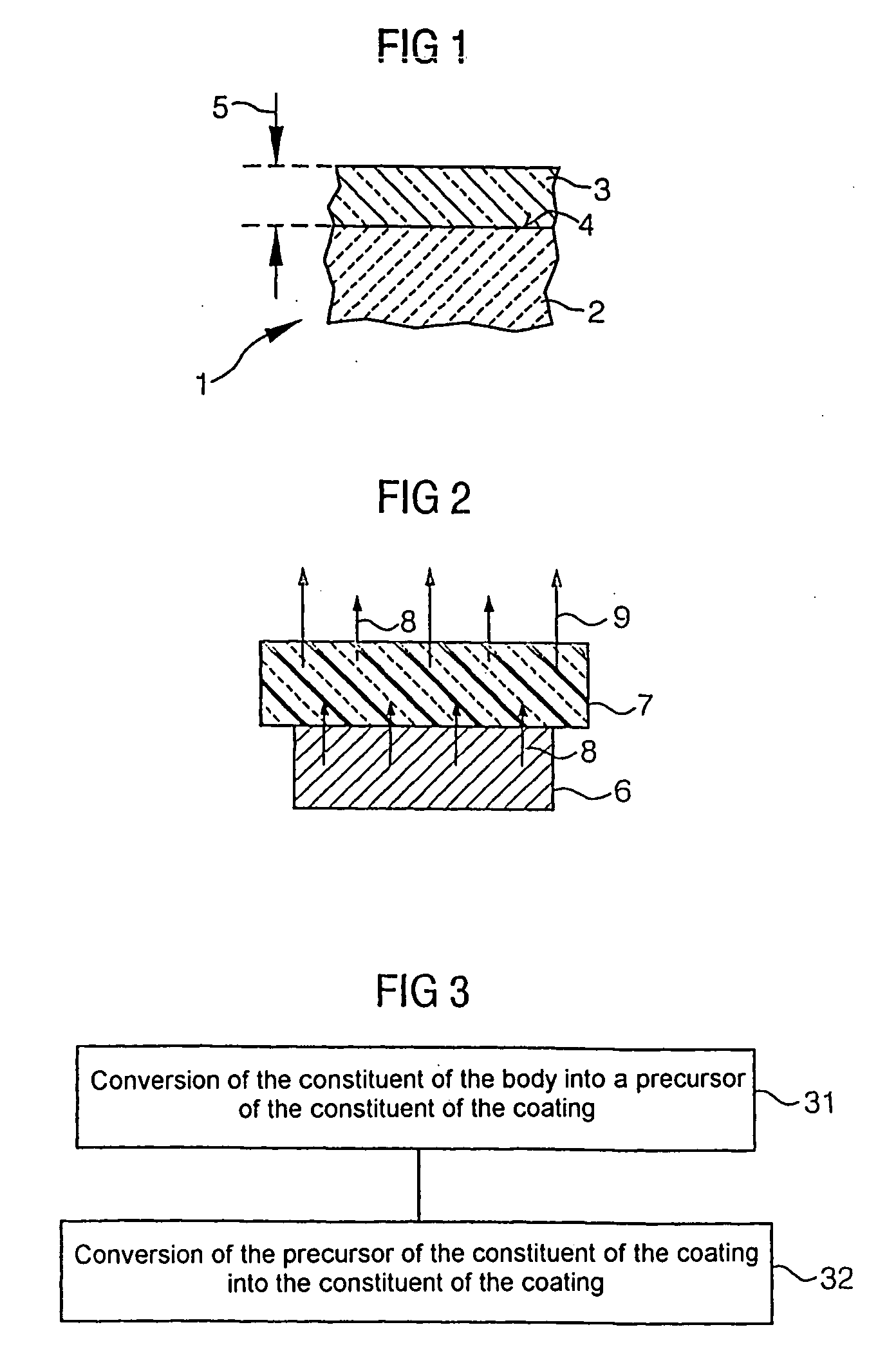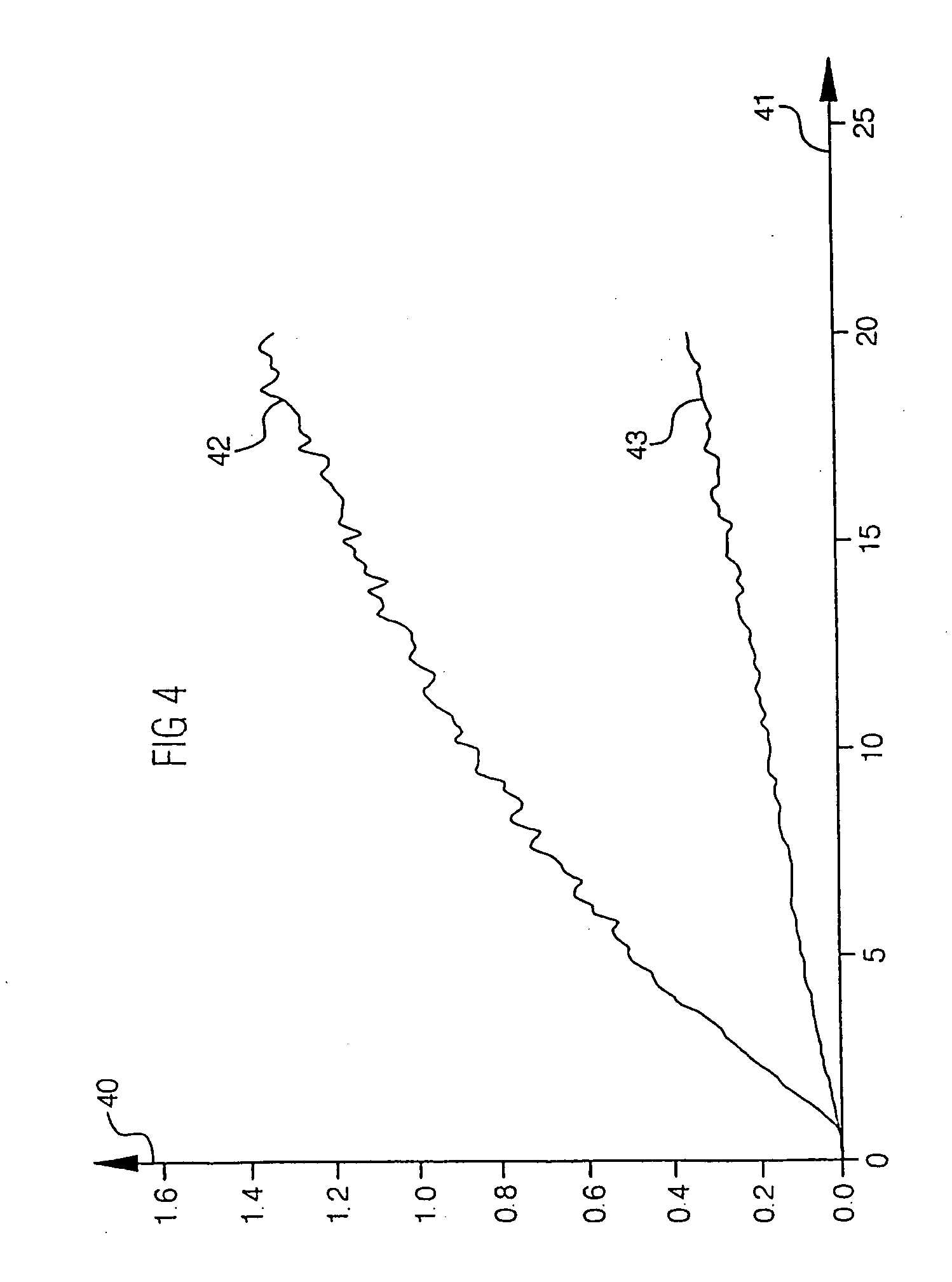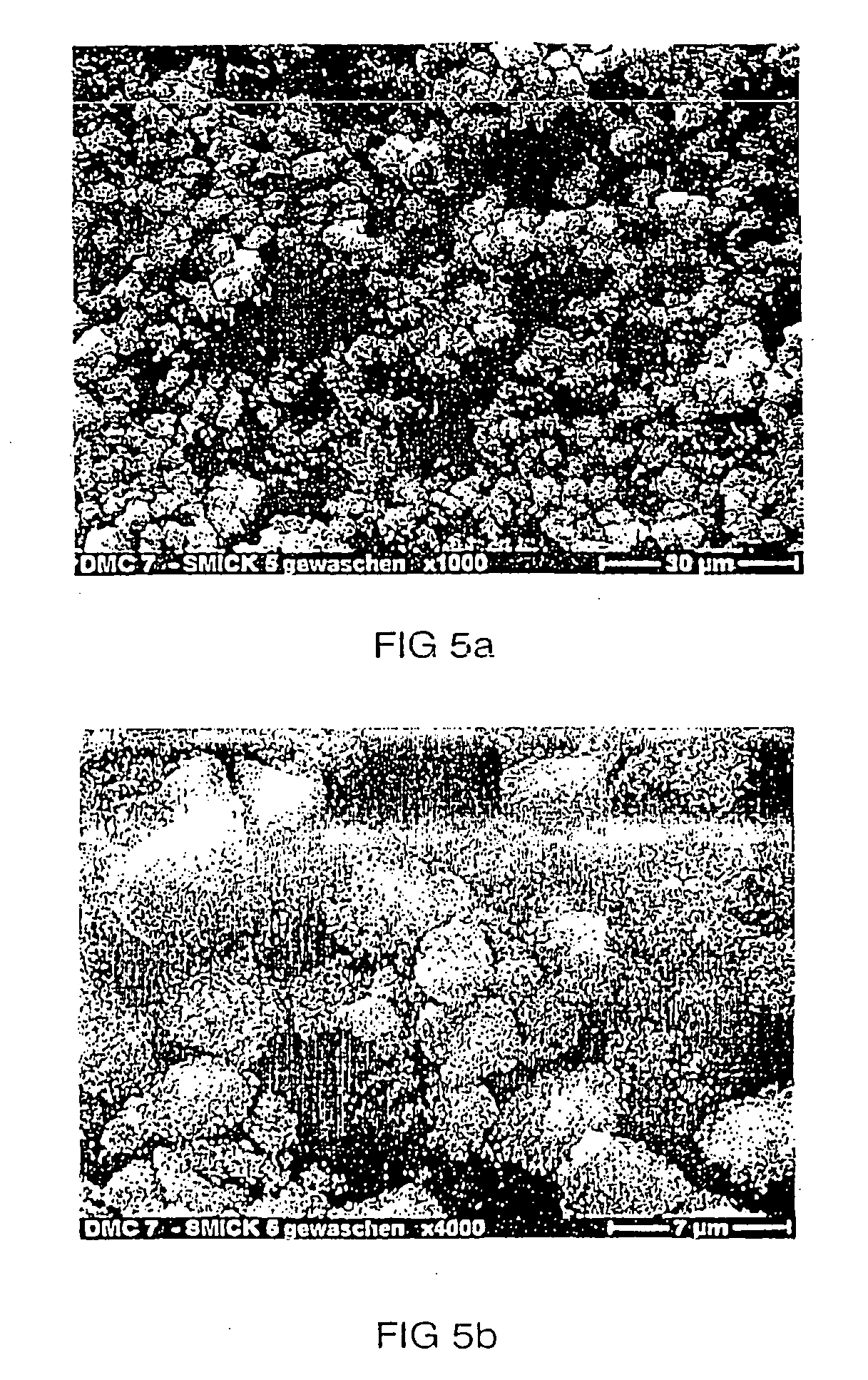Method for producing a coating on the surface of a particle or material, and corresponding product
a technology of particle or material and surface coating, which is applied in the direction of luminescnet screen, cellulosic plastic layered product, natural mineral layered product, etc., can solve the problems of time-consuming and expensive process for producing coating, and it is not always possible to ensure that the coating completely covers the surface of the phosphor particle, etc., to achieve the effect of producing simple and inexpensively
- Summary
- Abstract
- Description
- Claims
- Application Information
AI Technical Summary
Benefits of technology
Problems solved by technology
Method used
Image
Examples
exemplary embodiment 1
[0051] To apply the coating 3, 10 g of the phosphor powder are introduced into a glass vessel with stirrer together with 200 ml of water at a temperature of 80° C. The pH is controlled at this temperature by the addition of an approximately 3 molar mineral acid (hydrochloric acid). Alternatively, the pH is set with the aid of an organic acid (acetic acid). The pH is held at 8.3. After approximately 2 ml of acid have been added and a treatment time of 2 minutes, the pH is approximately reached. Then, further acid is added very slowly at this pH. The treatment is terminated after 20 minutes. The phosphor powder obtained is filtered and dried. This is followed by a heat treatment of the phosphor powder. The powder is calcined in vacuo at 300° C. for two hours.
[0052]FIG. 4 shows how the proportion 40 of hydrolyzed chloride-silicate changes in % with the reaction time 41 (duration of hydrolysis) in s when the phosphor powder is in an aqueous environment. The proportion 40 of hydrolyzed ...
exemplary embodiment 2
[0053] 10 g of the phosphor powder are introduced into a glass vessel with stirrer together with 200 ml of water-free ethylene glycol at a temperature of 60° C. The formation of the coating 3 is controlled under the continuous addition of small quantities of water-free acetic acid. The total quantity of acetic acid is such that approximately 10% of the phosphor powder is converted within 30 min. The phosphor particles 2 obtained after the addition of acetic acid has ended already have coatings 3. These coated phosphor particles are filtered, rinsed with ethanol, and dried for several hours in air at approximately 125° C. and for several ours in vacuo at 250° C.
exemplary embodiment 3
[0054] As an extension to Exemplary Embodiment 1, 1 g to 3 g of 20% strength water glass solution is added in addition to the hydrochloric acid. This results in ortho-silicic acid being present in the reactive medium, which as an inhibitor inhibits the removal of the silica from the surface portion of the phosphor particles. At the same time, the orthosilicic acid is incorporated into the coating 3. This promotes uniform growth of the coating.
PUM
| Property | Measurement | Unit |
|---|---|---|
| Thickness | aaaaa | aaaaa |
| Thickness | aaaaa | aaaaa |
| Thickness | aaaaa | aaaaa |
Abstract
Description
Claims
Application Information
 Login to View More
Login to View More - R&D
- Intellectual Property
- Life Sciences
- Materials
- Tech Scout
- Unparalleled Data Quality
- Higher Quality Content
- 60% Fewer Hallucinations
Browse by: Latest US Patents, China's latest patents, Technical Efficacy Thesaurus, Application Domain, Technology Topic, Popular Technical Reports.
© 2025 PatSnap. All rights reserved.Legal|Privacy policy|Modern Slavery Act Transparency Statement|Sitemap|About US| Contact US: help@patsnap.com



